Breast Reduction in Pune
Search and Compare the Best Clinics and Doctors at the Lowest Prices for Breast Reduction in Pune
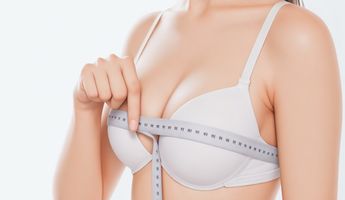
Find the best clinics for Breast Reduction in Pune
With Medijump you can browse 7 facilities offering Breast Reduction procedures in Pune. The cheapest price available is $1,107 in Mumbai
Breast Reduction in India
Price: $ 1,107
Breast Reduction in Mumbai
Price: $ 1,107
Breast Reduction in Delhi
Price: $ 1,366
Czech Republic offers the best prices Worldwide
Price: $ 89
From 168 verified reviews
Koraim Mohamed, 23 September 2020
Excellent hospital and provides very good services , Azhar from front desk was very helpful and cooperative
From 26 verified reviews
puja burande, 07 February 2020
Good clinic for skin n hai problem, Dr. Nitin Jain is good and treats well.
Inamdar Multispeciality Hospital Pune, can be found in Thite Nagar, Pune, India and offers its patients Breast Reduction procedures as well as 39 other procedures, across 6 different procedure categories. At present, there is no pricing information for Breast Reduction procedures at Inamdar Multispeciality Hospital Pune. The pricing information is quite specialised, so it's only available on request, and the average price is around $2,139. A small team of medical professionals undertake all procedures at the Hospital, with 3 in total, and Inamdar Multispeciality Hospital Pune is not accredited by any recognised accreditations institutions.
Dhanwantari's Chrysalis, can be found in Thite Nagar, Pune, India and offers its patients Breast Reduction procedures as well as 37 other procedures, across 4 different procedure categories. At present, there is no pricing information for Breast Reduction procedures at Dhanwantari's Chrysalis. The pricing information is quite specialised, so it's only available on request, and the average price is around $2,139. Many medical professionals work at the Hospital, with 4 in total, and Dhanwantari's Chrysalis is accredited by just one known accreditations institute, IMA - Indian Medical Association
Arra Aesthetics, can be found in Thite Nagar, Pune, India and offers its patients Breast Reduction procedures as well as 19 other procedures, across 3 different procedure categories. At present, there is no pricing information for Breast Reduction procedures at Arra Aesthetics. The pricing information is quite specialised, so it's only available on request, and the average price is around $2,139. A small team of medical professionals undertake all procedures at the Hospital, with 2 in total, and Arra Aesthetics is not accredited by any recognised accreditations institutions.
Dezire Clinic - Pune, can be found in Thite Nagar, Pune, India and offers its patients Breast Reduction procedures as well as 18 other procedures, across 3 different procedure categories. At present, there is no pricing information for Breast Reduction procedures at Dezire Clinic - Pune. The pricing information is quite specialised, so it's only available on request, and the average price is around $2,139. A small team of medical professionals undertake all procedures at the Clinic, with 2 in total, and Dezire Clinic - Pune has several accreditations, including: ISO Certification - International Organization for StandardizationISHRS - International Society of Hair Restoration SurgeryMBBS - Bachelor of Medicine, Bachelor of Surgery
Dr. Viral Desai's CPLSS-Pune, can be found in Thite Nagar, Pune, India and offers its patients Breast Reduction procedures as well as 35 other procedures, across 3 different procedure categories. At present, there is no pricing information for Breast Reduction procedures at Dr. Viral Desai's CPLSS-Pune. The pricing information is quite specialised, so it's only available on request, and the average price is around $2,139. A small team of medical professionals undertake all procedures at the Hospital, with 2 in total, and Dr. Viral Desai's CPLSS-Pune is not accredited by any recognised accreditations institutions.
Compare Before & After Photos of _procedure_photos.phpBreast Reduction

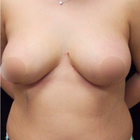
Front view

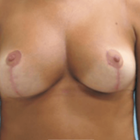
Front view

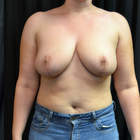
Front view
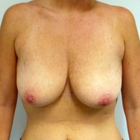

Front view


Front view


Front view
WHY US?
At Medijump, we're making medical easy. You can search, compare, discuss, and book your medical all in one place. We open the door to the best medical providers worldwide, saving you time and energy along the way, and it's all for FREE, no hidden fees, and no price markups guaranteed. So what are you waiting for?

Free

Best Price

Widest Selection

Risk-Free
What you need to know about Breast Reduction in Pune
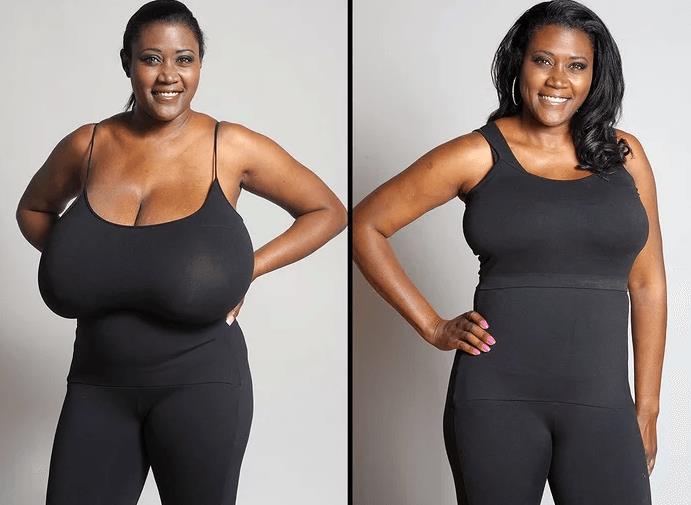
Female Breast reduction (reduction mammoplasty), also known as Reduction Mammoplasty, is a surgical operation to reduce the weight and volume of the breasts. During the procedure, fat, glandular tissue and skin are removed from the breasts, which are then reshaped, and the nipples repositioned. The nipple-areola complex (NAC) is preserved to ensure that lactational ability is not affected. The mammoplasty is performed for three reasons, aesthetic, physical and psychological.
Breast size is determined by genes, hormones, body frame, and weight. For most women, breast size is proportionate to the body, but for some, the breasts are particularly large. Large breasts can cause physical symptoms such as discomfort, backache, neck pain, and skin irritations. Oversized breasts can also cause psychological distress. Common complaints from women with large breasts include not being able to wear fashionable clothes and finding it difficult to take part in active sports. In these cases, breast reduction surgery can be an option.
What does a Breast Reduction Procedure Involve?
The procedure begins with making you lay in the supine position. Anesthesia is given to avoid pain during surgery. The area is sterilized and an incision is given around the areola and down your breasts. The flap of skin containing areola and nipple is displaced and excessive fat, breast tissue, and skin are removed to lessen the size of your mammary gland. In the next step, breasts are reshaped, areola and nipples are again placed over the reduced breasts and stitches are given.
In some cases, when a large amount of tissue and fat is removed, skin flap with areola and nipples is detached and repositioned at a higher level according to the new size. Drainage tubes are inserted into the breasts to drain away blood and fluid. Bandages are applied over the stitched incisions. You are asked to wear a surgical bra. It is tried to make both breasts look alike; however, small variations in the size of breasts and areola can be there.
What about Breast Augmentation?
Breast augmentation might also be performed on women who suffer from a condition called macromastia. It can be due to various reasons such as hypertrophy of adipose tissue in the breast, after menopause, postpartum, genetics, etc. In this condition, your breasts are sagging, and their size is bigger in proportion to your body, causing a number of problems. A woman affected by macromastia suffers from pain in the head, neck, shoulders, and back. Blood circulation and respiration are also disturbed. Men who experience gynecomastia can also opt for breast reduction surgery.
Another case where breast reduction can be an option is when breasts grow particularly large because of the use of hormone replacement therapy (HRT).
What is the cost of Breast Reduction in Pune?
It's crucial to bear in mind that Breast Reduction is a substantial procedure. Consequently, contemplating the expense of this process within Pune is critical. While the total cost might fluctuate based on individual circumstances and the intricacy of the operation, it typically includes the cost of anesthesia, hospital expenses, surgical equipment, and the surgeon's charge. Having a comprehensive understanding of the total price is critical to make an educated decision and align your financial planning accordingly.
Numerous factors could influence the expense of a Breast Reduction in Pune. This includes the skill level of the surgeon, the complexity of the procedure, the kind of anesthesia applied, and postoperative care services. Thorough research and careful financial planning should enable you to handle the costs associated with the process. Also, if needed, you could consider alternatives for financial aid or insurance cover.
How Long Should I Stay in Pune for a Breast Reduction Procedure?
Surgery can last between 2 to 5 hours and sometimes even longer depending upon the size of your breasts and amount of fat and tissue that is to be removed - an overnight stay as an inpatient is required. After your condition is monitored, you are discharged from the hospital. You have to stay for at least 14 days in Pune for follow up procedures. Regular check-ups are advised in the first few days after surgery. Oral pain killers are given to deal with pain and swelling. Stitches are removed in 2 weeks after which you are allowed to go home. In case you notice any redness, secretion, abnormal pain or inflammation, consult your doctor.
What's the Recovery Time for Breast Reduction Procedures in Pune?
It takes several months for recovery from a breast reduction surgery. You cannot go to work for 1 to 2 weeks after the surgery. There will be pain and swelling in the initial days for which you are given some medicines. Avoid intensive physical activity for at least 1 month. You are asked not to wear underwire bras for a few months. You are allowed to wear a normal bra after 4 weeks. It takes 6 to 8 weeks for the swelling and tenderness to go away. Even after complete recovery, scars do not disappear. However, they are faded and become less visible. Changes continue to take place for a year after going through this surgery.
What sort of Aftercare is Required for Breast Reduction Procedures in Pune?
You should consider the following points to take care of yourself after surgery:
- Do come for regular check-ups.
- Take your medicines regularly, as and when prescribed by your physician.
- Make sure that someone lives with you to look after you.
- Follow a healthy diet plan for a better recovery.
- Do not wear fancy, underwire bras in the early days. Wear surgical bra only.
- Wear loose clothes, tees, and shirts.
- Avoid excessive, unnecessary movement of your breasts.
- Do not take a bath in the first few days, a wet bandage can be the cause of infection.
- Do not ignore any kind of soreness, redness or abnormal secretions from your breasts. Visit your doctor immediately.
- Drink plenty of water. It is very effective for a quick recovery.
- Use icepacks to help you with swelling.
- Do not try to lift heavy objects because your movement is restricted due to stitches. It can open up your stitches before time.
- Do some stretching exercises when told by your physician.
What's the Success Rate of Breast Reduction Procedures in Pune?
Breast reduction mammoplasty is found to be successful in most of the cases. According to a survey, 80% of women are satisfied with the results of the surgery. This effectively reduces neck pain, back pain, headache, and shoulder pain, with your breasts no longer sagging and causing these problems. Respiratory and circulatory problems are also resolved. In case this surgery is not successful, it leaves prominent scars which can be subjected to hypertrophy. There might be less than the required amount of tissue and fat removal. Sometimes, more breast tissue is removed leaving your chest flat. A secondary breast reduction surgery is performed to cope with this.
For an in-depth and personal review of the pros and cons of Breast Reduction, including before and after shots, watch this video blog.
Are there Alternatives to Breast Reduction Procedures in Pune?
Following are some alternatives to reduce your breast size without going through a surgery:
- Weight Loss: losing weight can also be effective in the case of reducing breast size. Some exercises are there to help you decrease your size. Exercise removes excess adipose tissue making your breasts smaller.
- Liposuction: it is a less invasive method in which a small incision is given to insert a cannula and fat is sucked from it reducing breast size. There are least scarring and recovery is faster.
- Fitting bra: it is not a permanent method to reduce your breast size but a specialized fitting bra can be helpful in making your breasts look smaller. It is not a standard bra.
What Should You Expect Before and After the Procedure
Knowing what to expect before and during a Breast Reduction helps you prepare physically, intellectually, and emotionally for the experience. A comprehensive health examination is scheduled before the procedure. Along with preparing for the procedure by following the pre-surgery instructions supplied by your healthcare institution, this is also your chance to discuss your hopes and concerns with the surgeon. Your food routine, medication regimen, and lifestyle practises might need to change as a result of this preparation.
After the surgery, it's common to feel some soreness, inflammation, and sometimes even bruising. All of these symptoms can be treated with the right medication. It's important to unwind, refrain from strenuous activity for a few weeks, wear a bra with a specific purpose, and follow a specific wound care regimen.
What are Potential Risks of Breast Reduction?
The Breast Reduction, similar to any other surgical procedure, poses possible risks and complications such as infection, bleeding, altered sensation in the nipple or breast due to anesthesia, and difficulties in breastfeeding post-operation. It is imperative to have a detailed discussion about these potential issues with your healthcare professional at the consultation phase.
It's important to know that the probability of these risks occurring is minimal and can be reduced further by opting for a well-respected clinic and surgeon, following the pre-surgical instructions, and adhering to the aftercare routine provided.
Whilst the information presented here has been accurately sourced and verified by a medical professional for its accuracy, it is still advised to consult with your doctor before pursuing a medical treatment at one of the listed medical providers
No Time?
Tell us what you're looking for and we'll reachout to the top clinics all at once
Enquire Now

Popular Procedures in Pune
Prices Start From $85

Prices Start From $120

Prices Start From $692

Prices Start From $236

Recommended Medical Centers in Pune for Breast Reduction

- Interpreter services
- Translation service
- Religious facilities
- Medical records transfer
- Medical travel insurance
- Health insurance coordination
- TV in the room
- Safe in the room
- Phone in the room
- Private rooms for patients available

- Interpreter services
- Translation service
- Religious facilities
- Medical records transfer
- Medical travel insurance
- Health insurance coordination
- TV in the room
- Safe in the room
- Phone in the room
- Private rooms for patients available

- Interpreter services
- Translation service
- Religious facilities
- Medical records transfer
- Medical travel insurance
- Health insurance coordination
- TV in the room
- Safe in the room
- Phone in the room
- Private rooms for patients available

- Interpreter services
- Translation service
- Religious facilities
- Medical records transfer
- Medical travel insurance
- Health insurance coordination
- TV in the room
- Safe in the room
- Phone in the room
- Private rooms for patients available

- Interpreter services
- Translation service
- Religious facilities
- Medical records transfer
- Medical travel insurance
- Health insurance coordination
- TV in the room
- Safe in the room
- Phone in the room
- Private rooms for patients available

- Interpreter services
- Translation service
- Religious facilities
- Medical records transfer
- Medical travel insurance
- Health insurance coordination
- TV in the room
- Safe in the room
- Phone in the room
- Private rooms for patients available

- Interpreter services
- Translation service
- Religious facilities
- Medical records transfer
- Medical travel insurance
- Health insurance coordination
- TV in the room
- Safe in the room
- Phone in the room
- Private rooms for patients available

- Interpreter services
- Translation service
- Religious facilities
- Medical records transfer
- Medical travel insurance
- Health insurance coordination
- TV in the room
- Safe in the room
- Phone in the room
- Private rooms for patients available

- Interpreter services
- Translation service
- Religious facilities
- Medical records transfer
- Medical travel insurance
- Health insurance coordination
- TV in the room
- Safe in the room
- Phone in the room
- Private rooms for patients available

- Interpreter services
- Translation service
- Religious facilities
- Medical records transfer
- Medical travel insurance
- Health insurance coordination
- TV in the room
- Safe in the room
- Phone in the room
- Private rooms for patients available
Breast Reduction in and around Pune
About Pune
Pune is a city in the Indian state of Maharashtra. With an estimated population of 3.13 million, it is the ninth most populous city in the country. Like many other cities in India, this city is a perfect blend of ancient and modern. It’s a thriving metropolis that still retains a few of its old buildings and residential areas. The city is famous for the Osho International Meditation Resort, an ashram founded by the late guru Bhagwan Shree Rajneesh. There is a lot to see and do in this city that cannot be packed into a short weekend trip. Recently, many tourists visit the city for its medical treatments.
Pune’s is in sync with India’s fast-growing medical tourism. Domestic and foreign patients prefer the city to get the best healthcare. Medical cost is relatively cheaper here than in any other medical tourism country. The government is expanding this sector rapidly to drive a strong growth rate. With high-quality hospitals, infrastructure, and well-trained medical professionals, the city has a lot of contribution in helping India to be the number one medical destination in the world.
A wide range of medical treatments is available in Pune, from Breast Augmentation, Tummy Tuck, to Otoplasty. Columbia Asia Hospital Pune, Deenanath Mangeshkar Hospital and Research Center, and Apollo Jehangir Hospital are some of the best hospitals with the highest ratings.
Popular Areas in Pune
Pune has a lively nightlife and vibrant atmosphere due to its large student population. It’s sometimes called “Oxford of the East” because there are numerous colleges and institutes here. It is also well known for its hill forts that offer panoramic views, fantastic restaurants, and good museums. The city has a magnificent history of nearly 1600 years.
- Shaniwar Wada is a historical fortification situated at the very heart of Pune. Built in 1732, it was originally a seven-storied capital building of the Peshwas of the Maratha Empire. It’s an amazing place for history buffs. Tourists can enjoy some live shows in the evening.
- Mahadji Shinde Chhatri has an extremely beautiful architecture that reflects the style used in Rajasthan. It is a memorial dedicated to the great soldier, Mahadji Shinde who served as the commander-in-chief of the Maratha army under the Peshwas for twenty years. The memorial consists of a temple dedicated to Lord Shiva.
- Pataleshwar Caves is a religious shrine that dates back to 700 – 800 AD. Located on Jungli Maharaj Road, the shrine has grand statues of Nandi, Sita, Ram, Lakshman, Lakshmi, Ganesh, and a big Shivalingam.
- Parvati Hill is the highest point in Pune. It offers a beautiful panoramic view of the city and is especially breathtaking during sunrise and sunset. The hill is home to four temples.
- Osho International Meditation Resort draws thousands of sannyasins since 1990. It is the perfect place to get some peace of mind. With various meditation techniques, the resort is suitable for those who want to indulge in some luxurious meditation. The resort has a swimming pool, sauna, spa, and guesthouse.
Weather and Climate in Pune
March to June is summer and the temperature can get really high during this season, with the highest temperature ever recorded is 43.3 °C (109.9 °F). The end of May usually experiences dusty winds. Humidity is also very high.
Monsoon or rainy season starts in June and last until October. There are moderate rainfall and the average temperature ranging from 22 °C to 28 °C (72 to 82 °F). July is the wettest month of the year with occasional Hailstorms.
Winter has the most pleasant weather. It starts from December to February. The average daytime temperature is around 26 °C (79 °F) and night temperature can drop to 5 °C to 6 °C (41 to 43 °F). Due to the pollution, the city’s winter temperature has warmed up by 6 degrees.
Getting Around in Pune
Pune International Airport is still the main airport in the city until the completion of the proposed Chattrapati Sambhaji International Airport. This airport has one terminal that serves both domestic and international flights. Major airlines such as Air India and budget airlines such as AirAsia India, GoAir, and IndiGo operate flights from this airport. The international flights connect the city with Abu Dhabi, Dubai, Sharjah, and Frankfurt.
To get to the city center from Pune International Airport, taxis, buses, auto-rickshaws, and car rentals are available. There are four bus lines that reach the city center: 24B, 102, 158 and 158A. A bus ride usually takes 45 minutes. Taxis are relatively affordable, there are pre-paid and metered taxis out on the arrivals area.
Tourists can use the PMPL City bus to get around Pune. Almost all parts of the city can be reached by the buses, but be aware that it can be very crowded and smoke-belching. The fare ranges from 5 INR to 22 INR. Auto-rickshaws are widely available within the city; there are metered and pre-paid auto-rickshaws. If you choose the metered one, always make sure that the drivers use the meter before getting in. Taxis are another nice option; the prices range between 7 INR/km to 20 INR/km. online hailing apps are also available. There are many car rentals and tourists can drive around the city, but there is a lot of traffic and bad driving in Pune.
Tourist Visas in Pune
All visitors, except citizens of Nepal and Bhutan, need to obtain and apply for a visa to enter India. Citizens of South Korea and Japan can apply for a visa on arrival. E-Visa is available for 150 nationalities. Tourists coming for medical treatment can apply for the medical attendant e-visa.
Passport must be valid for at least 180 days after your entry to India and should have at least two blank pages.
Additional Information
- Local Currency: Indian rupee (INR) is the local currency. 1 USD converts to 70 INR.
- Money & Payments: ATMs are widely available in Pune. Tourists can find many exchange services around the city. Credit and debit cards are accepted at several restaurants, hotels, and shops. It is advisable to always carry cash. Tipping is not mandatory; you can always tip 10 to 15 percent of the billed amount in restaurants.
- Local Language: Marathi is the official language of Pune. Most people also speak Hindi. English is widely spoken especially in tourist areas.
- Local Culture and Religion: Most of the population follows Hinduism. Other religions such as Islam, Buddhism, Jainism, Christianity, and Zoroastrianism have significant presences in the city.
- Public Holidays: Pune celebrates major religious holidays. The city also celebrates several annual festivals such as Pune Festival, The Eateries Food Fest, and Pune International Film Festival.
Popular Searches
- Plastic Surgery in Thailand
- Dental Implants in Thailand
- Hair Transplant in Thailand
- Breast Augmentation Thailand
- Gastric Sleeve in Thailand
- Gender Reassignment Surgery in Thailand
- Laser Hair Removal in Bangkok
- Botox in Bangkok
- Dermatology in Bangkok
- Breast Augmentation in Bangkok
- Coolsculpting in Bangkok
- Veneers in Turkey
- Hair Transplant in Turkey
- Rhinoplasty in Turkey
- Stem Cell Therapy in Mexico
- Rhinoplasty in Mexico
- Liposuction in Mexico
- Coolsculpting in Tijuana
- Rhinoplasty in Korea
- Scar Removal in Korea
- Gastric Sleeve in Turkey
- Bone Marrow Transplant in India
- Invisalign in Malaysia
- Plastic Surgery in the Dominican Republic
- Tummy Tuck in the Dominican Republic
- Plastic and Cosmetic Surgery in Poland
- Rhinoplasty in Poland
- Hair Implant in Poland
- Dental Implants in Poland
- IVF in Turkey





